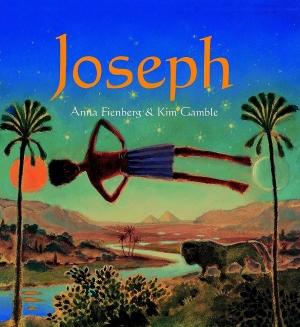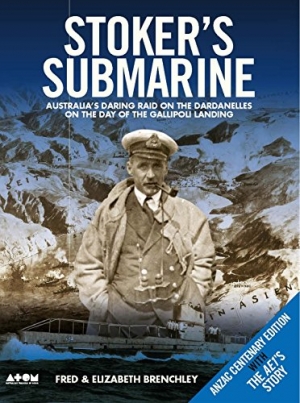Review
Alan Atkinson reviews 'The Origins of Irish Convict Transportation to New South Wales' by Bob Reece
This book tells how the Irish government gradually rearranged its methods of convict transportation, from a variety of destinations in North America to a single destination on the far side of the world. The story takes place predominately between 1783 and 1791, from the independence of the United States (which effectively closed American ports to British and Irish transports) to the sailing of the Queen, the first ship to take convicts direct from Ireland to New South Wales. It is a subject that has never been properly examined, mainly because we tend to assume that the Irish point of view – as far as administration goes – was nothing more than a footnote to the British.
... (read more)At school assemblies, when I was ten, I was required to recite a pledge which ended with the words ‘and cheerfully obey my parents, teachers and the law’. The novels reviewed here are all concerned with family, and the way in which young people operate within and outside it.
... (read more)John McPhee reviews 'Debating the City' edited by Jennifer Barrett and Caroline Butler-Bowden
In his amusing essay, ‘The More Things Change’, John Birmingham writes:
Sydney will always confound, infuriate, engage and seduce. It is a provider/destroyer, madonna/whore and prophet of the main chance. It is hated, feted, loved and envied. It cares not. Self-obsessed and cosmopolitan, tacky, shallow and deeply serious, it knows its own worth and vainly overstates it at every turn – as when one speaker at the last (sic) Premier’s litfest dinner favourably compared the old tart with the Florence of Michelangelo. The gasps at the dinner tables were probably in surprise that anyone could think to bracket Sydney with such a provincial backwater.
While, I hope, ironic, this observation could be said to be indicative of the attitude behind many of the individual chapters in this anthology.
The book, as its editors inform us in their introduction, has grown out of a series of ‘Debating the City’ conferences held at the Museum of Sydney in 1999 and 2000. They, and the Director of the Historic Houses Trust, Peter Watts, in his foreword, are at pains to stress that this book is about cities, ‘the liveability of the modern city’ and ‘the city as an interdisciplinary subject’. However, while the conferences may have been about cities, the overwhelming number of papers selected for publication in the book take Sydney as their almost exclusive subject. In fact, eleven of the eighteen chapters are specifically about aspects of Sydney’s urban development or the experience of living in Sydney. Perhaps John Birmingham got it right.
... (read more)Brian McFarlane reviews 'Myth and Meaning' by Peter Malone
The title of this book suggests that it will be less concerned with industrial aspects of Australian cinema than with ideological, but, as if this might limit its scope and resonance, Peter Malone’s subtitle suggests that other lines of inquiry and response might be accommodated as well. This proves to be the case.
... (read more)Dianne Dempsey reviews 'The Blind Eye' by Georgia Blain and 'Bella Vista' by Catherine Jinks
Reading Australian novels is often like gazing through an album of snapshots taken by various photographers attending the same party. The subject matter will depend on what stage of the evening the photos were taken – all the way from pre-dinner drinks to the finale of a Bacchanalian brawl – and it will depend, of course, on who is taking the photos. What is the photographer looking for? Who are the subjects that captivate?
... (read more)The picture book format is the workhorse of children’s literature. It is expected to entertain and enlighten audiences ranging from infants and toddlers to young adults. Eric Carle’s The Very Hungry Caterpillar, the quintessential picture book for very young readers, introduces some basic concepts through simple text and colourful collage. At the opposite end of the spectrum, Isobelle Carmody’s fantasy novel, Dreamwalker, published earlier this year with illustrations and design by graphic artist Steven Woolman, has sophisticated teen appeal.
... (read more)Michael McGirr reviews 'Francis: A Saint’s Way' by James Cowan
It wasn’t long before myths and legends grew up around the story of St Francis of Assisi. James Cowan is right to suggest that this process began before Francis died and that Francis himself allowed or willed it to happen. He may even have encouraged it: ‘Francis endeavoured to make a metaphor out of his own life.’
... (read more)Robin Prior reviews 'Stoker's Submarine' by Fred and Elizabeth Brenchley
I remember reading a book entitled Deeds That Won the Empire at primary school. Mainly, it seemed to be about the slaughter of various groups of native races by the superior technology and organisation of the West, always personified by focusing on an intrepid leader called Carstairs or Hethington-Bloggs, or some such name. Even in the 1950s, the book had a desperately old-fashioned feel to it. This type of writing, one felt, could not last.
... (read more)Peter Pierce reviews 'The True Life of Jimmy Governor' by Laurie Moore and Stephan Williams
Five of Laurie Moore’s ancestors were in the party that finally captured Jimmy Governor in October 1900, ninety-nine days after his murderous onslaught on the Mawbey family. He and his wife have assiduously traversed the terrain of the manhunt for Jimmy and his brother Joe. Moore’s book, The True Life of Jimmy Governor, written in conjunction with Stephan Williams, is an admirable amateur labour: loving, painstaking, yet never without a tinge of irony about fashions of remembering folk anti-heroes in Australia. As the authors remark near the end of their story: ‘the brothers held up, or were fed by, everyone’s great aunt or grandfather’.
... (read more)Michael Kirby reviews 'Religion and Culture in Asia Pacific' by Joseph Camilleri
The huge changes that have occurred in Australia in the space of a century were reflected in the recent centenary of Federation celebrations in Melbourne. They were evident, for example, in the repeated acknowledgment of Aboriginal Australians and in the selection of a young female Asian-Australian to speak on behalf of the future.
... (read more)









